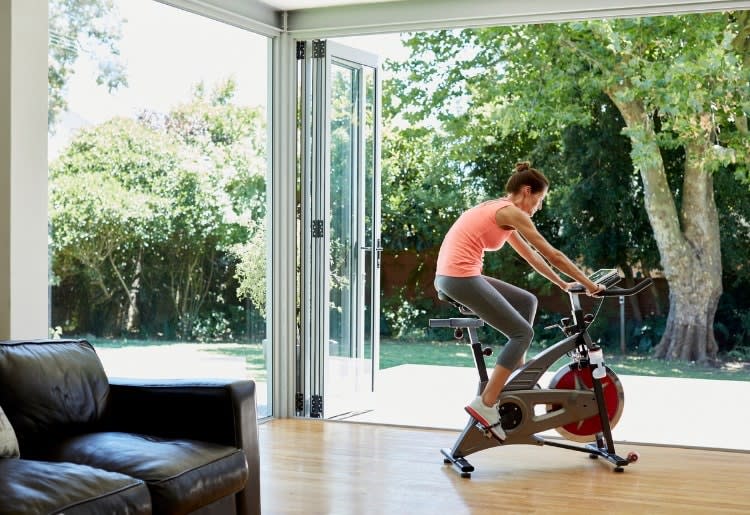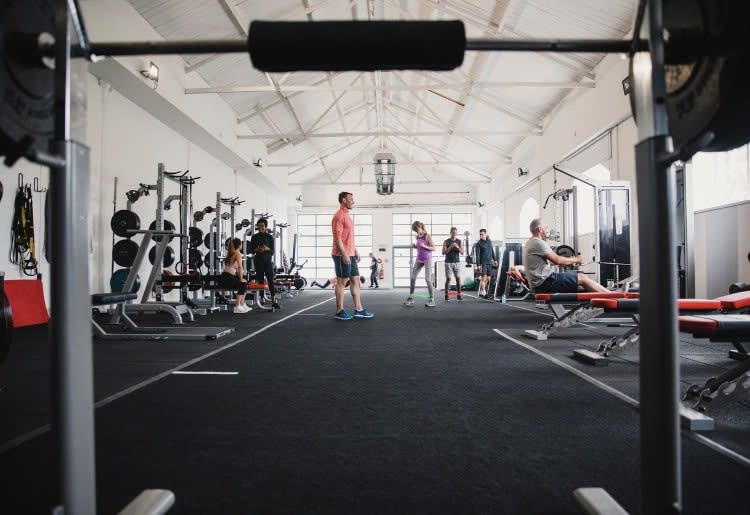You made a decision. Great! But how do you know whether it’s a good decision?
You need to ask yourself:
- What intentions drove me to make the choice?
- What did I expect from the decision?
- Did the reality of the decision match or exceed my expectations?
That means you need to be able to measure the quality of your decision. You can do so by:
- Determining the criteria by which you made your decision
- Assessing what you expect to be the quality of the decision
- Assessing the reality of the decision on these criteria over time
Here’s a table that you can use to evaluate numerically the effectiveness of your decision.
Here’s an example of how to do so in practice, taken from a real-life situation that many of us may be able to relate to:
Rafaella made a major physical fitness decision 3 months ago: she decided to cancel her gym membership. We’ve all been there, right?
Rafaella had many reasons for stopping her gym membership. It cost a pretty penny, $49 every month. She didn’t like the extra hassle and time required to go to the gym to exercise. She resented the guys who ogled her when she did her workout. It was unpleasant to use equipment that other people failed to wipe down after use, despite gym guidelines on doing so.
While she’d felt ambivalent about her gym membership for quite some time, her feelings crystalized when she talked to Leona, who used a home exercise machine to work out. Rafaella decided to follow Leona’s lead and bought a home exercise machine for $550. She figured it would pay for itself in less than a year, while addressing all of her other concerns as well.
At first, Rafaella felt excited about her purchase. She used the exercise machine nearly daily, as opposed to the 3-4 times a week that she made it out to the gym.

You may also like:
However, over time she found herself using the machine less and less frequently. Rafaella struggled to motivate herself to work out with no one else around her. She also felt constrained by the limited exercises available on the machine, compared to the much wider variety of options at the gym. When the machine had a mechanical issue 5 weeks after she bought it, Rafaella had to wait over a week for the replacement part, which fortunately, was covered by the warranty; in the meantime she couldn’t do her exercises.
So Rafaella found herself increasingly wondering whether she’d made an effective decision. Was it a wise choice to get the home exercise machine? Or had she made a foolish decision—one that could impact her health and quality-of-life?
Have you ever found yourself pondering that same question, whether about a major buying decision or any other significant choice you made in life or work? How can you tell whether you chose correctly or not?
After all, we tend to be much less rational in our decision-making strategies than we think we are, and are powerfully influenced by a range of factors of which we’re unaware. Fortunately, recent neuroscience and behavioral economics research offers some useful strategies to assess whether you’re making the best life decisions.
Evaluating Decision Making: A Case Study
How would this approach work out in practice? Let’s say Rafaella determined that her intent is to keep the positives of gym membership, while getting rid of the negatives.
The latter would mean addressing the problems of: monthly gym costs; the hassles and time of going to the gym; the lecherous glances from men; finally, the dirty gym equipment. No problems there, the exercise machine realistically addressed all of them.
What does it mean to maintain the positives of gym membership? Specifically, it would mean that Rafaella maintains the same level of physical exercise. She made it to the gym 3-4 times a week for about an hour each, and had a regimen where she exercised all of her major muscle groups. So the home exercise machine should provide the exact same function.
Imagining the concrete exercises she could do with the machine, it might become clear to Rafaella that she can’t exercise all of her muscle groups with the $550 model she is thinking about buying, so she can choose to get free weights to exercise other muscle groups. Yet if she did so, she would sacrifice safety, given that free weights are less safe than a machine.
Rafaella would also have to manage machine maintenance, which the gym previously managed. Even if the machine breaks while it’s still under warranty, it costs Rafaella in terms of the time to take care of getting it fixed and she wouldn’t be able to do at least some exercises.
Rafaella should also consider mood and motivation. Many home exercise machines go unused, rusting in a forgotten corner of the basement.
Sure, Rafaella did not like the looks she got from some of the lecherous guys at the gym, but something she needs to consider is the social support she found there. Working out surrounded by other people doing the same thing is very different from working out on your own. In ways we don’t realize, these other people influence us to keep exercising as part of the social norm of the space in which we find ourselves: the gym.

Of course, Rafaella can address this concern through finding an exercise buddy to come over and exercise with her. Additionally, she can consider a wide variety of top fitness apps that provide motivation.
Additionally, Rafaella needs to create a way of tracking her mood, before and after exercising, both to evaluate the decision and help her motivation.
Getting to the Numbers
If you want to really master the art of making good decisions, it helps to create a table comparing your estimates of the quality of your purchase and rate changes to your evaluation over time. Consider the various criteria of your decision and set a value of 1 (low) to 10 (high) for the quality of each criteria.
Here’s what Rafaella’s initial estimates might look like.
Rafaella decided that 5 on a criteria would indicate that the home exercise machine is the same quality as the gym, while anything lower meant worse quality and higher meant better.
This table reflects Rafaella’s choice to get the $550 machine, so the cost in her estimate is a definite saving over the gym, making it an 8.
Her initial assessment of her mood and motivation is that it will be substantially better than at the gym, due to no guys ogling her or dirty equipment, making it a 7.
She estimated a chance of some maintenance work, making that a 3. She paid $40 for some free weights to address the constrained exercises she can do with a machine, increasing risk and decreasing safety and adding slightly to costs, not enough to shift from 8 to 7.
She figured that she’ll be able to do all the exercises she wants with the machine and the weights, and that her fitness won’t suffer, making it a 5.
Finally, she assessed that she’ll save a great deal of time due to not putting on extra clothing and going to the gym, so she put time savings at 10.
Although the estimate of 36/60 might seem low, it was good enough for Rafaella, since it was over the 50% mark. It would be a worse decision to not make the purchase.
Keep doing the assessment weekly to evaluate how your initial assessments measure up to reality. Let’s see what’s the situation with Rafaella at the 3-month mark.
As we know, Rafaella had to deal with a serious maintenance issue at 5 weeks that was fortunately covered by warranty. Still, it cost her time for fixing the machine and also harmed her fitness because she couldn’t do any exercises except free weights. So she decreased her initial estimates of safety, time, and fitness for the machine.
She also seriously struggled with mood and motivation, as she underestimated the impact of social motivation on her willingness to exercise, and decreased her estimate of mood and—due to less exercise—of her fitness.

Given these changes, Rafaella felt quite disappointed with her purchase decision. She was also unpleasantly surprised to learn how much she depended on social support.
Still, she decided to make the best of the situation, as she didn’t have an option of returning the machine. She committed to getting social support from an exercise app and an occasional workout buddy. Although doing so cost her in terms of time, she figured the motivation boost would be worth it. After an additional month with the exercise buddy and fitness app, here’s what her numbers looked like.
She felt much more motivated, and was able to spend more than the 210 minutes she wanted doing exercises. Her fitness and motivation both increased a lot, even if her time saved decreased. With this tweak, she grew much more satisfied with her buying decision.
The Science of Effective Decision Making
With Rafaella’s story in mind, let’s break down the science of how to make effective decisions. Decision science indicates that, just as with making the wisest and most profitable business decisions or the healthiest relationship choices, determining whether you made the best shopping decision starts with your intentions:
- What do you seek to achieve?
- What are your goals and aspirations?
- How do you want the world to be different after you make your choice?
- Where do you want your choices to lead you in the future?
These are the kinds of questions you need to answer as you start to consider making any significant decision. You need to paint a clear vision of the outcome you want to see. The more concrete and specific you can make the vision, the better.
For a shopping decision, envision yourself using the product you purchased. Think through every aspect of interacting with it:
- How would it address your goals and intentions?
- How would it satisfy your needs and desires?
- How confident are you that you will look back at it as worth the money, time, and other resources you expended on buying and using this product?
- How would you feel about it in the short, medium, and long term after you purchase it?
-min.20200401110803.jpg)
The latter question may seem strange to ask, but we know our emotions powerfully influence our decisions. You should be realistic and include your emotions explicitly in your evaluation process to ensure you’re happy with your shopping decision.
In answering these questions, you will develop certain expectations about the purchase. Make them explicit by writing them out. Besides the more abstract expectations coming from the questions above, write out more prosaic expectations about the product:
- What do you expect the product to do for you?
- How often are you likely to use it?
- How well will it hold up under use?
Consider other relevant expectations for the decision you’re evaluating.
And make sure to ask yourself whether these are realistic expectations. Having excessive expectations is the surest way to be unhappy with your decisions.
Lastly, you need to develop a way of measuring whether your intent is addressed and your expectations are met or exceeded with a purchase. The number system described above is a concrete way of doing this.
The Ability to Make Better Decisions Is in Your Hands
In conclusion, if you want to make sure you made an effective decision, you need to determine a clear intent, develop realistic expectations that address cognitive biases, and then use specific measurements to evaluate whether your decision addresses your intent and matches or exceeds your expectations.
It takes some effort up front to define intent, expectations, and measurements, so it’s worth it to go through this process only for significant decisions. Yet it will save you so much stress, anxiety, and frustration down the road if you stop wondering about whether you made a good decision and instead confidently measure the effectiveness of your choice.
